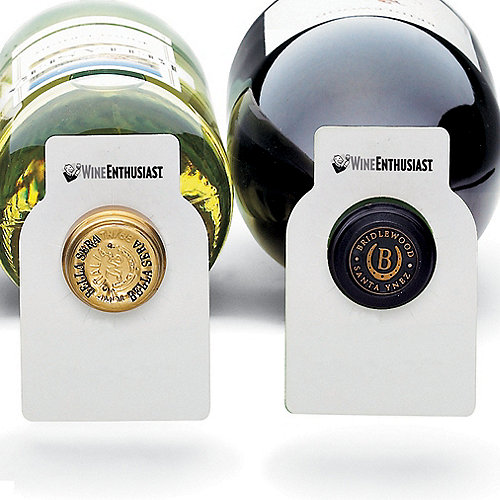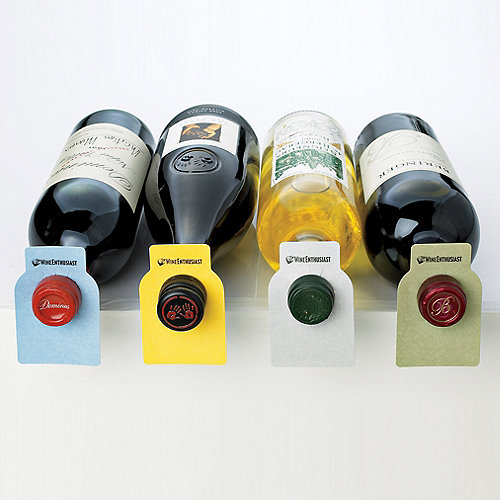
Before your basement or hall closet turns into a cardboard box-laden nightmare, check out these top tips for how to store and organize your precious goods so you can always access the right wine at the right time.
First off: location, location, location.
If your collection is just a case or two, keep those bottles in as cool of a place as possible with very little light. Put your least expensive bottles on the top and the most expensive on the bottom. That way, it’s harder to access the good stuff in case some wandering hands come by.
Even with a small collection, consider buying a few racks to keep everything in good order and store your bottles horizontally. It’s better for the wine, and keeps the corks moist and ensures minimal air seeps into the bottle.
Avoid storing your collection in the kitchen, as it’s usually the warmest room in the house. A small wine refrigerator is a smart investment. Not only does it help organize your collection, but more importantly, it keeps the wine at the right temperature.
We Recommend:
Consider your organizational preferences.
There are various schools of thought on how best to organize a wine collection. Some group wine by region, some by grape variety, others by vintage or even price. There isn’t a right or wrong answer. The question is, what makes the most sense to you?
When you look for a bottle, do you always know just what you want, or do you start with one element and then narrow choices from there? Do you begin by identifying a specific country or region you want to drink a wine from? Maybe you gravitate toward a preferred variety? Whatever the answer, use it as a starting point for organization.
Generally, sorting by country is the easiest place to start. Ideally, each country would have its own section. Within that section, you might filter down to subregions, then perhaps by vintage and price.
For example, one section of your cellar might be devoted to France. Within that section, you could have smaller collections of Bordeaux, Burgundy, Rhône, Languedoc and Loire. The wines could be grouped by vintage, perhaps in chronological order, or by order in which they’ll be in their optimal drinking window.
If there are better vintages, like 2009 or 2010 in Bordeaux, which should age longer, you may want to place them behind lesser-quality vintages that should be enjoyed sooner.
Start with wine tags.
If you are a meticulous organizer, wine tags are just the ticket. They’re little white pieces of paper with a hole in the middle that go around the neck of the bottle. If you store wine in a display-style rack, like a VintageView or Ultra Racks, the labels themselves will be displayed. But with a rack where the neck faces out, simply write the name of the winery, variety, vintage, price and any other information you want to easily be able to view.
Different colored tags can denote specific countries, regions or drinking windows. For example, red tags can mark wines to hold, yellow tags can denote selections that approach maturity and green tags could suggest bottles to drink now.
Get geeky.
If your collection spans several regions and subregions, you may want to organize everything into a spreadsheet or use a wine inventory app.
A spreadsheet requires a lot of time, patience and maintenance. You’ll have to record everything consistently to know the true extent of your collection.
Similarly, anything consumed must be removed from your inventory document. Wines can either deleted or moved to a separate worksheet with tasting notes, which can keep a fun history of your experiences. If you have multiple bottles of the same wine, it’s also a valuable tool to track drinking windows.
A spreadsheet can also help identify what wine you might seek from a larger collection. You can filter the list by any desired criteria to better find the exact bottle you want, without spending a significant amount of time staring at your racks being overwhelmed.
For the more technologically minded, there are several apps to consider. CellarTracker, VinCellar, Vivino and VinoCell are all good choices. It’s just a matter of which format suits you best and if you want to use a scanning system.
Just be aware, even though some apps allow you to scan a barcode or QR code, not every wine will have one. So regardless of which you use, there will likely be some manual input of wines.
If you have a substantial collection, you may want to look into the eSommelier, a hardware/software system dedicated to cataloging every wine in your collection. It offers professional ratings for each wine, and information on when it’s ready to drink. The program even creates barcode labels for each bottle.
Personalize it.
Consider any other organizational strategies that best suit your needs. For example, if you have a few wine drinkers in your house, consider personalized shelves tailored to each person’s tastes.
Similarly, drinking recommendations based on occasion might be best for easy bottle selections. Consider different shelves or racks for wines meant for everyday consumption, versus those more complex and thought-provoking pours.
Other groupings can be organized around special events, like children’s birth years, or favorite travel destinations. The possibilities are endless. There’s no better time to explore your options and play with your bottles.








